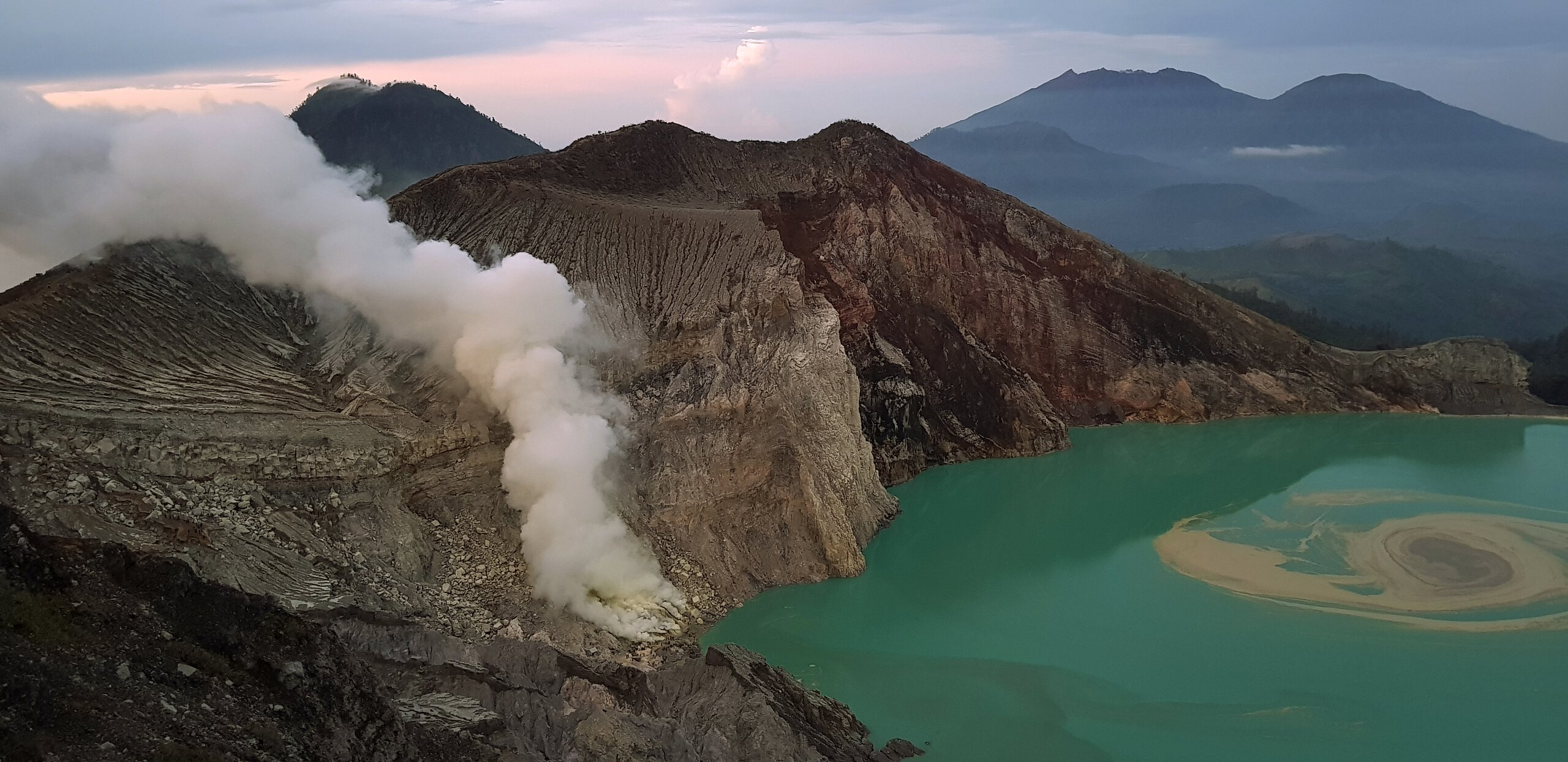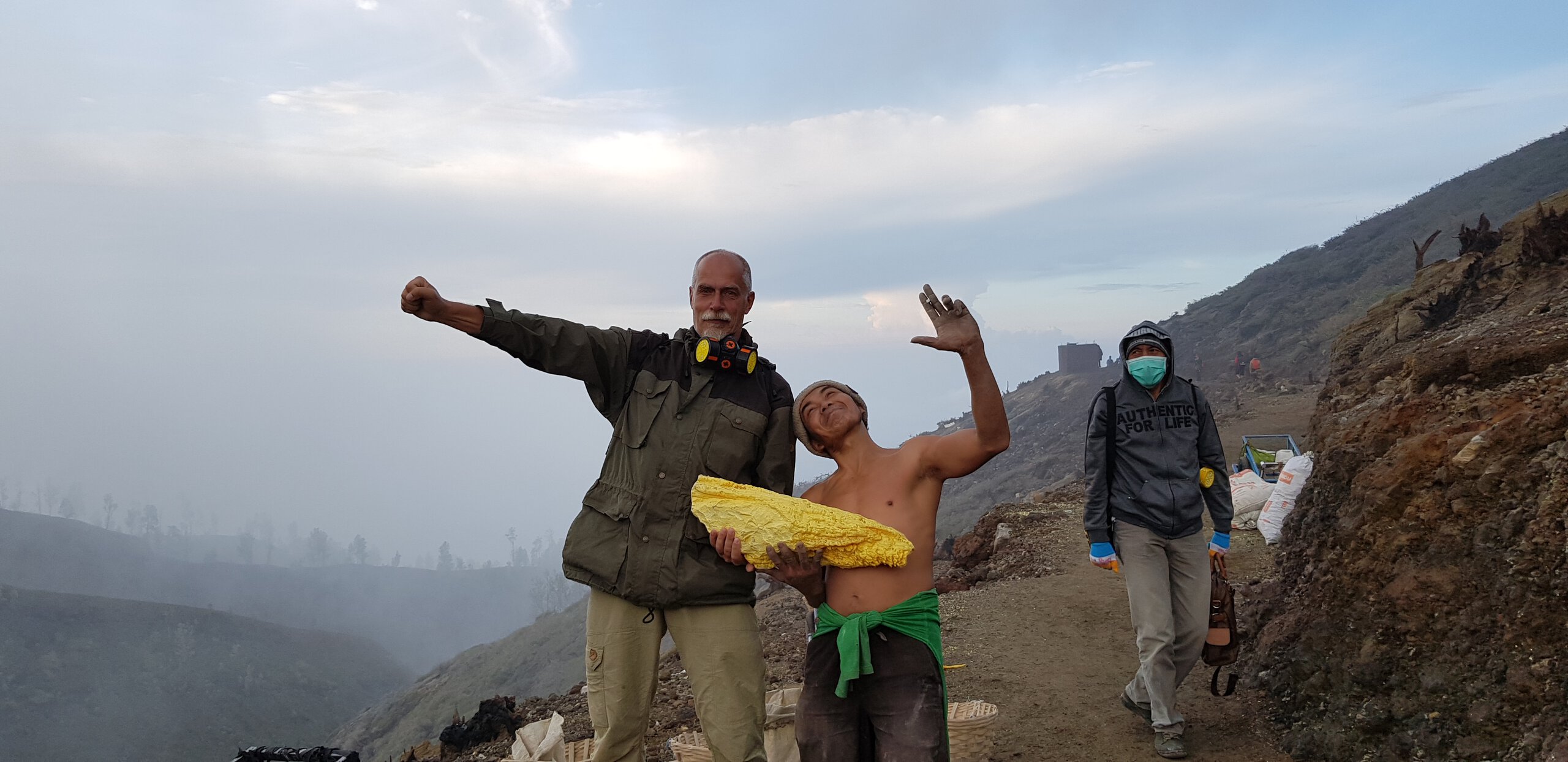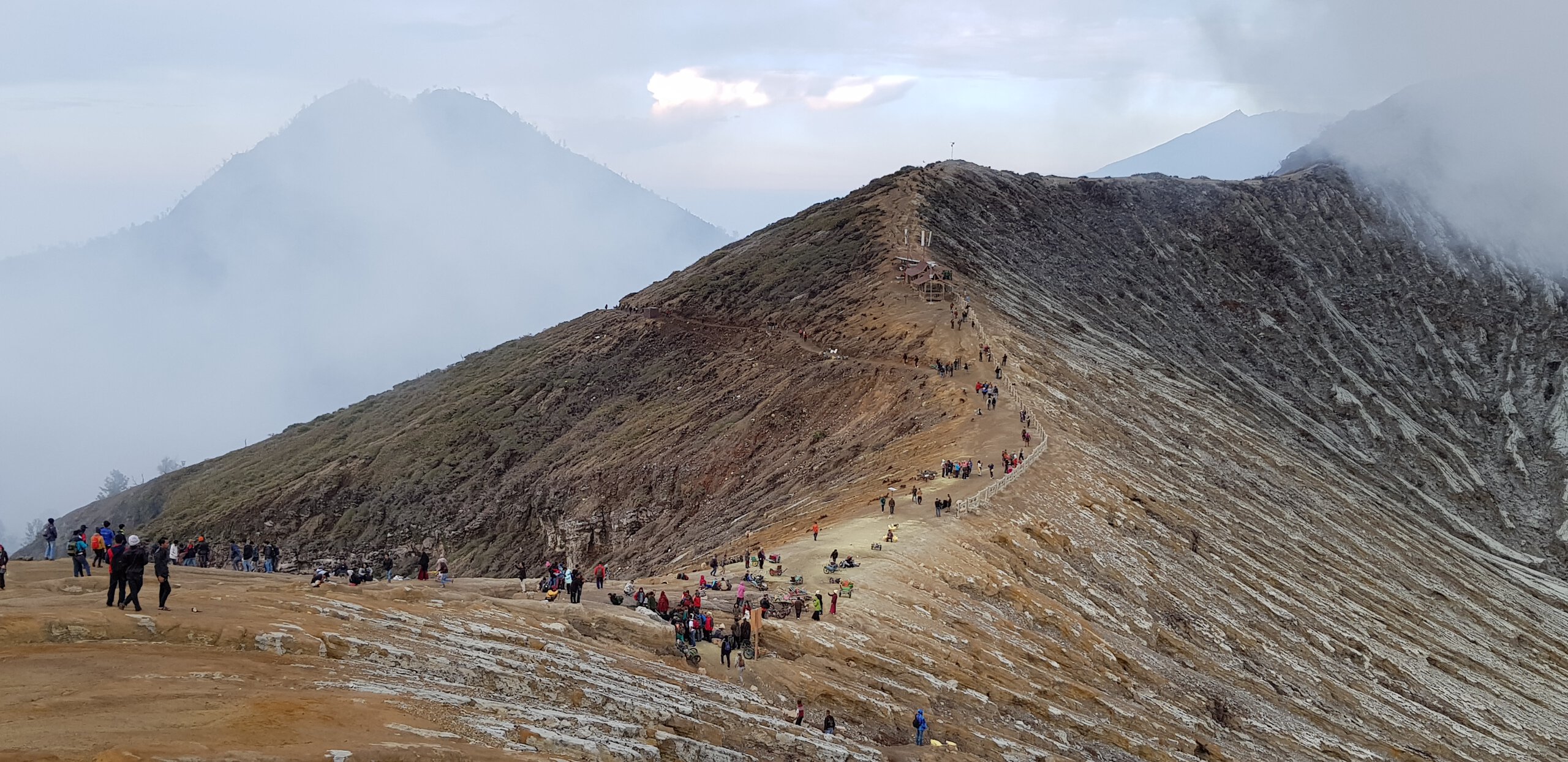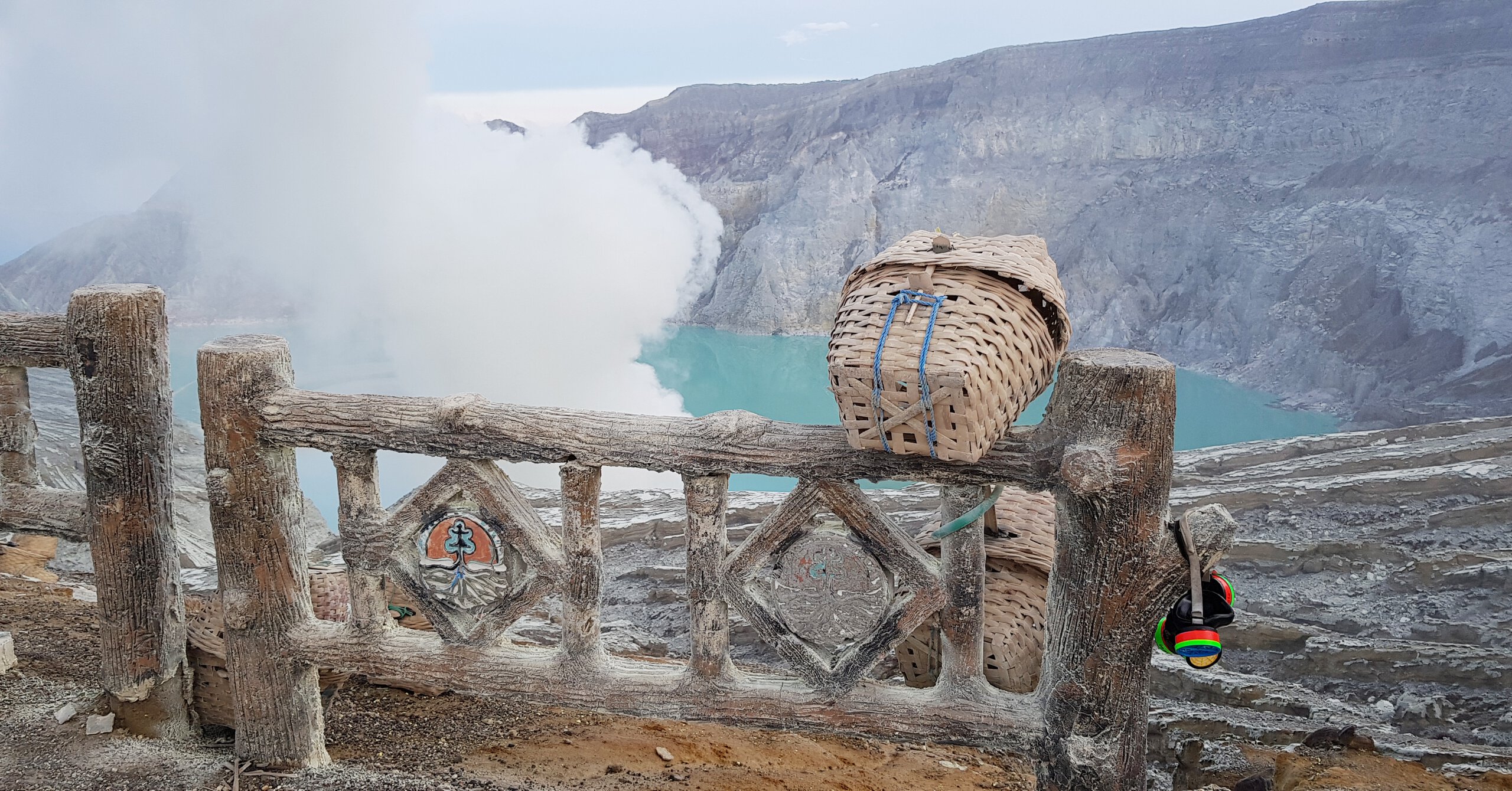Ijen Volcano in East Java, Indonesia

Ijen volcano in the Eastern edge of Java is, in my opinion, the most spectacular and accessible option around to visit a volcanic crater. It is also far less crowded than the Bromo national park, the closest similar site to compare.
Ijen is part of a volcanic complex, and is located in a caldera of the same name. The diameter of the caldera is about 20 km. This is all that remains of the ‘Old Ijen’ volcano that was once well over 3000 meters tall, until the series of explosive eruptions destroyed it around 50 000 years ago.
Ijen remains an active and regularly erupting volcano, though the last magmatic eruption happened in 1817, lasting for more than a month, destroying a few villages and killing a lot of people.
Ijen volcano is famous for its turquoise-blue highly acidic warm Kawah Ijen lake that fills the bottom of the crater. In some parts of the lake, which is approximately 900 m by 600 m, the pH level was measured as low as 0.5. The lake is the source for Banyupahit river with highly mineralized water.
Next to the lake, there are numerous fumaroles emitting gaseous sulphur at high temperatures. Sometimes the sulphur ignites, producing the ‘blue fire’ phenomena visible at night with varying intensity. This is the main attraction factor for tourists.
Ijen is also a sulphur mining site, and mining involves hard, low-paid and hazardous manual labour. The miners have to descend into the crated full of toxic sulphur oxide gases, which, when contacting with moist air, produce clouds of sulphur acid. The gas masks they use are not the full-face ones, but rather just cover mouth and nose. The sulphur is carried in baskets to the rim of the crater, and a few kilometers further on. The miners are paid by the weight of the sulphur delivered. A couple of fellows I’ve talked to boasted they make about 160K IDR (about 10 Euros) a day. Plus tips from bule tourists for making photos with them.

Getting to Kawah Ijen
The most convenient starting point is Banyuwangi, a harbour town in East Java, connected to Bali with ferry. Dismiss all the random ’tour guides’ approaching you in Bromo and Bali, you won’t need them. Instead, just book a room in a local hotel that offers tours to Kawah Ijen. I’ve stayed at “Titan's Greenhouse” and enjoyed it, but there are certainly more options. The hotel had partner tour guides, who for 320K IDR picked me and other clients at about midnight with their all-terrain truck, supplied us with simple gas masks, brought us to the entrance of the park and later on, in the morning, brought us back to our hotels.
The ascent was rather easy, most of it being either a tarmac road or a reasonably maintained dirt road. Having a headlight is nevertheless a good idea.
Once you reach the crater, you will see a sign prohibiting descent into the crater, that everybody ignores. At this point, think twice. Look at the picture on this page. You will be descending in the darkness under a cloud of sulphur acid using a narrow, steep, and unfamiliar path. Worse, depending on the day of the week, you might be doing so with a crowd of mostly unprepared people. For instance, I met an old man who couldn’t move on his own, leaning on his guide, a thin local girl; I saw a woman on this trail, wearing formal high-heel shoes; and of course, crowds of yelling youngsters. If anything goes wrong enough for this crowd to panic, it won’t be pretty.

Before the sunrise, walk up and around the crater to a higher point. When the sun rises, you won’t regret it – the view over the lake is magnificent, and you can actually see the point where the river flows out of the lake. Besides, it will keep you naturally warm on a chilly morning. No it won’t be as cold as the Indonesians will be telling you, but still – it’s an open place with some 2300 meter elevation above the sea level.
